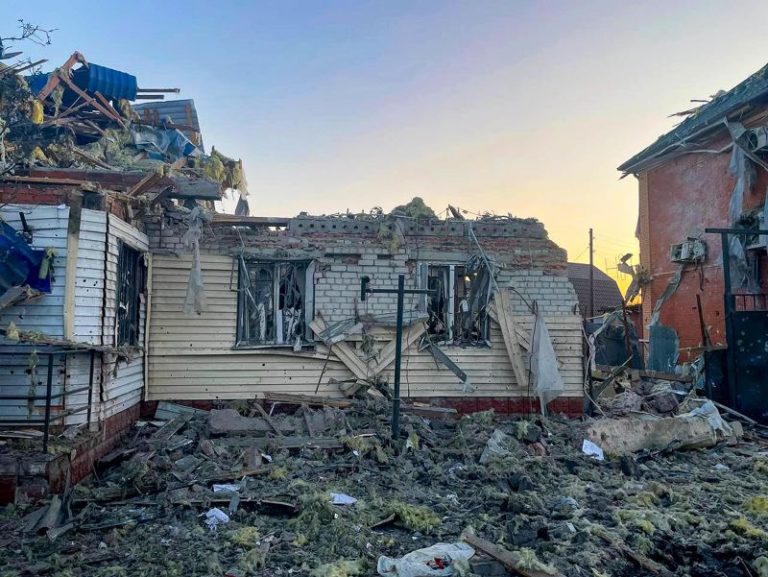Kyiv needed a win, but not a gamble.
Ukraine’s decision to launch a large amount of its scant military resources across the border into Russia – in pursuit of headlines but, thus far, an unclear strategic objective – marks a moment of either desperation or inspiration for Ukraine. And it does perhaps herald a new phase of the war.
Not because incursions into Russia by Ukraine are somehow new – they have been happening for over a year, mostly by Russian citizens, fighting for Ukraine with obvious Ukrainian military assistance but no official, public role.
It feels new because this is, according to Russia at least, the regular Ukrainian army mounting an attack on Russia, and a rare roll of the dice by a Ukrainian top brass whose movements have been criticized mostly in the last 18 months as being too slow and conservative.
On Tuesday, Kyiv took badly needed resources and fresh troops and launched them well inside Russia. The immediate effect satisfied two needs: a headline that involved Russian embarrassment and Ukrainian forward motion, and another that Moscow’s troops should scatter to reinforce their borders. After weeks of bad news for Kyiv, in which Russian forces have slowly but inexorably moved towards the Ukrainian military hubs of Pokrovsk and Sloviansk, Moscow is left scrambling to shore up its most essential front line – its own border.
But even as Kyiv declined to say anything Wednesday about what Russian President Vladimir Putin had called a “major provocation,” the wisdom of this gamble was openly questioned by some Ukrainian observers.
There may be a larger strategy at play here. Sudzha, now at least partially under Ukrainian control, is next to a Russian gas terminal, right on the border, which is key to supplying gas from Russia, via Ukraine, to Europe. That arrangement is said to close end in January, and this may be a bid to curtail a lucrative source of funding for Moscow that has angered Kyiv since Russia’s full-scale invasion began in 2022. (As of Thursday, there were no public indications of gas supplies being affected).
Yet until the wider importance of this incursion emerges, there remains a huge question mark over the strategic goals of Oleksandr Syrskyi, the comparatively new commander of Ukraine’s forces. Splits in his command have simmered into public view recently, with younger subordinates questioning Syrskyi’s willingness to endure significant casualties in frontline battles of attrition, in which Russia’s superior manpower usually prevails.
It is a Soviet mindset, and Syrskyi is from that era. But those dying or returning home as amputees are often from a younger generation who value dexterity and guile perhaps more than brute persistence.
Ukraine has for months exceled at targeting – often with what appears to be Western help – Russia’s internal infrastructure, chewing up runways, naval bases, and oil terminals in a bid to cause long-term damage to Moscow’s economy and war machine. But this is different: It is sending a large ground force miles into enemy territory, where Ukrainian supply lines are more fraught and objectives are by definition tougher to pursue.
The move comes at a time when the Ukrainian effort has begun to see a concrete benefit from Western weapons finally arriving.
F-16 fighter jets are new to the front lines but may be able to dent Russia’s withering air supremacy in the coming months. That could mean fewer gliding bombs hitting Ukrainian frontline troops and fewer missiles terrorizing Ukraine’s urban communities. Ammunition remains a problem for Kyiv, according to some accounts, but surely Western supplies may eventually plug that gap.
So why this high-risk move now? If we look beyond the immediate positive news cycle for President Volodymyr Zelensky, other goals emerge. For the first time in the war, talk of talks has begun. Russia may be invited to attend the next peace conference held by Ukraine and its allies. The proportion of Ukrainians who approve of negotiations, while a minority, is marginally growing. And the possibility of a Trump presidency is glowering above Kyiv.
US Vice President Kamala Harris may retain the same steadfastness as President Joe Biden over Ukraine. But it is important to remember that Western foreign policy is a fickle and easily exhausted beast. NATO’s persistent backing for Ukraine is an outlier. And as the war edges towards its fourth year, questions about how this ends will grow louder.
Is there any real merit to Ukraine fighting and dying with no real prospect of retaking occupied territory from Moscow? Does Russia want an indefinite grind forward, in which it loses thousands of men for hundreds of yards’ advance, and sees its wider military capability slowly worn down by longer-range Ukrainian strikes?
With the prospect of a negotiated settlement now less distant, both sides will scramble to improve their battlefield position before sitting down at the table. It is unclear if Ukraine’s move into Kursk is motivated by that, or a simple move to inflict damage where the enemy is weak.
But it marks a rare and substantial gamble with Kyiv’s limited resources, and so may herald the Ukrainians’ belief that greater change is ahead.

